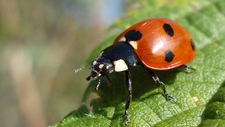Insect Life Cycles

TEKS Objective
The student is expected to investigate and record some of the unique stages that insects undergo during their life cycle.
Essential Understanding
The student knows that organisms resemble their parents and have structures and processes that help them survive within their environments.
Science Background
Life Cycle of Butterflies and Moths: The Children’s Butterfly Site (website) - Photos and descriptions of the four distinct stages in the life cycle of an insect.
Life Cycle of Butterflies and Moths
The Children’s Butterfly Site, www.kidsbutterfly.org
About Bug Life Cycles: Bug Life Cycles (website) - Large collection of photos, organized by species, which illustrates different insect life cycle stages. Non-insects, such as spiders, are also included.
Signature Lesson
Where Do Butterflies Come From? Howard Hughes Medical Institute (website) - Engaging activities in which students create models to investigate and record the unique stages of butterfly life cycles.
Where Do Butterflies Come From?
Howard Hughes Medical Institute, www.hhmi.org
- Supporting Lessons
- Extensions
- Assessment Ideas
- Literature Connections
- Related
TEKS - Additional Resources
Supporting Lessons
Life Cycle Flip Books: Exploring Nature (website) - Students create a flip book that illustrates the growth and changes undergone by a plant or animal as it moves through it life cycle.
Life Cycle Flip Books
Exploring Nature, www.exploringnature.org
Hatch Your Own Praying Mantises: Education.com (website) - Create a habitat and hatch praying mantises. Care for the insects, and observe the unique stages of the praying mantis life cycle.
Hatch Your Own Praying Mantises
by Peggy Ashbrook, Education.com
Life Cycles: Iowa State University (website) - Students learn the life cycles of four different types of insects: mealworm/beetle, butterflies and moths, crickets, silverfish. They also care for one insect and observe its life cycle.
Life Cycles
Iowa State University, Department of Entomology, www.ent.iastate.edu
Elaboration Lessons and Extensions
A Ladybug’s Life Cycle: Bright Hub (website) - Teach students about the life cycle of a ladybug as they create models of each stage of the cycle, and then compare this life cycle to that of a butterfly.
A Ladybug’s Life Cycle
Bright Hub, www.brighthub.com
Butterflies in Space: BioEd Online (website) - Create classroom habitats for painted lady butterflies and observe their life cycle. Do real science in your classroom by asking questions about butterfly behavior and comparing the behaviors of your ground-based butterflies to those of the “butterflynauts” that flew on the International Space Station.
Butterflies in Space
BioEd Online, www.bioedonline.org
Life Cycle of a Mealworm: Squidoo (website) - Students use the scientific method while conducting a series of activities in which they observe and record their findings about the life cycle of a mealworm. Includes background information, downloadable lesson guide and student pages, etc.
Assessment Ideas
Life Science Worksheets and Printables: Education.com (website) - Assess students’ knowledge of the life cycle of different insects with the many worksheets available on this website.
Literature Connections
A Ladybug’s Life. Himmelman, John (ISBN-13: 978-0516263533)
Monarch Butterfly. Gibbons, Gail (ISBN-13: 978-0823409099)
Mealworms (Life Cycles). Schaffer, Donna (ISBN-13: 978-0736832960)
Crickets. Hall, Margaret (ISBN-13: 978-0736850957)
Ladybugs. Ashley, Susan (ISBN-13: 978-0836840629)
Additional Resources
Our World, Honeybees: NASA eClips (video) - Join NASA scientists and beekeepers in a citizen science project to collect important data about climate change. See how honeybees pollinate more than 130 crops in the United States each year and learn how NASA is helping research of the decline in bee populations. (Scroll down the list of videos and click on the “Honeybees” icon.)
Our World, Honeybees
NASA eClips, www.nasa.gov
Science in the Schoolyard Video (Grade 2, Insects): FOSSWEB (website) - Observe as teachers and students observe insects outdoors. Watch the video by selecting “Grade 2 (Insects)." Includes practical tips for taking your class outdoors and strategies for managing time outside.
Science in the Schoolyard Video (Grade 2, Insects)
FOSSWEB, www.fossweb.com
TEKS Navigation
Grade 2
Need Assistance?
If you need help or have a question please use the links below to help resolve your problem.

Comments